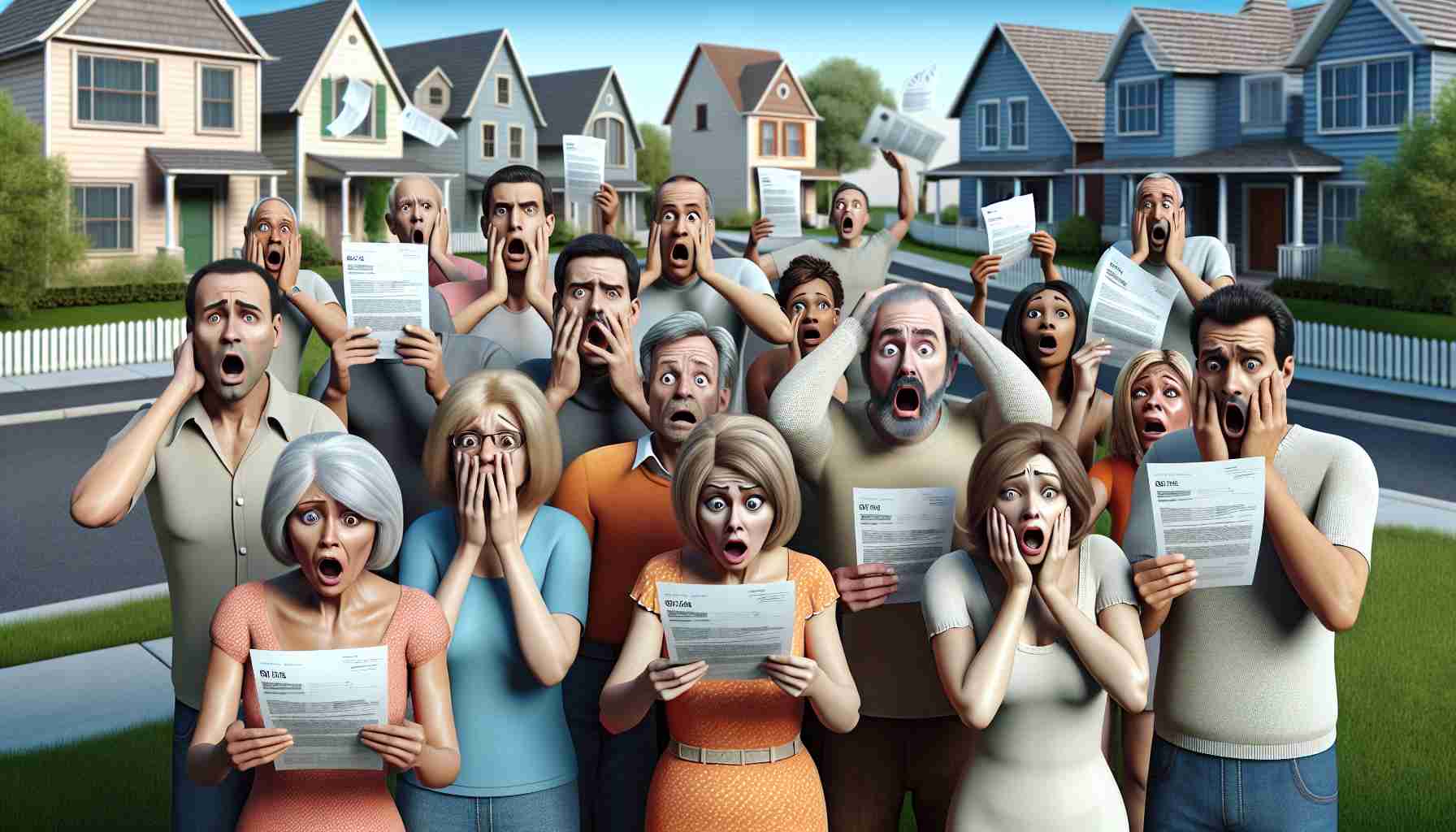Homeowners in California are facing an escalating insurance crisis that has left many reeling. Last year, numerous residents experienced a shocking increase in their homeowners’ insurance premiums, with some seeing their rates surge dramatically.
In Pacific Palisades, one resident, Francis Bischetti, opted to go without insurance after discovering his premium would jump from $4,500 to a staggering $18,000. Unable to afford the hike or perform costly tree removals to meet safety recommendations, Bischetti made the risky decision to forgo coverage. Tragically, his home, along with thousands of others, was destroyed in a historic fire that swept through Los Angeles, marking a devastating chapter in the area’s history.
Many homeowners from fire-prone neighborhoods are echoing similar sentiments, as insurance companies tighten their policies and withdraw coverage altogether. High-profile insurers like State Farm have announced plans to not renew thousands of policies, citing the escalating costs and risks associated with wildfires.
In the aftermath of these disasters, survivors like Peggy Holter are left grappling with uncertainty about rebuilding, as the funds from their insurance may not cover the costs of their destroyed properties. With the California FAIR Plan absorbing an increasing number of policies, residents are left to question the future of home insurance in the state amid an ongoing wildfire crisis.
The California Homeowners’ Insurance Crisis: What You Need to Know
**Understanding the Current Landscape of Homeowners’ Insurance**
California homeowners are grappling with a burgeoning insurance crisis driven by rampant wildfires and the rising costs associated with coverage. This situation not only threatens the financial security of homeowners but also raises broader questions about the sustainability and future of home insurance in the state.
**Recent Trends in Insurance Costs**
There has been a significant spike in homeowners’ insurance premiums across California. According to industry reports, policy rates have increased by as much as 200% in some regions, particularly in areas vulnerable to wildfires. This trend is exacerbated by the withdrawal of coverage from major insurers, leaving many residents scrambling for affordable options.
**Key Features of the Current Insurance Market**
1. **Higher Premiums**: On average, homeowners in high-risk areas are seeing premiums leap substantially, leading to difficult decisions about whether to maintain insurance.
2. **Insurer Withdrawals**: Major companies like State Farm and Allstate have opted to cease issuing new policies or renewing existing ones in fire-prone regions, citing unsustainable risk levels.
3. **The California FAIR Plan**: A state-sponsored program designed to provide basic coverage for those unable to find insurance in the private market, the FAIR Plan is absorbing an increasing number of policies. However, coverage provided is often minimal, leaving many homeowners still vulnerable.
**Pros and Cons of the Current Situation**
– **Pros**:
– Increased awareness of wildfire hazards has prompted some residents to implement better fire safety measures.
– Alternative insurance options are emerging, seeking to fill the gap left by major insurers.
– **Cons**:
– Homeowners face severe financial stress due to rising premiums and diminished coverage options.
– Many residents are opting for no coverage at all, significantly increasing their risk in case of disasters.
**Use Cases and Real-Life Implications**
Residents in areas like Pacific Palisades embody the dire choices homeowners make under pressure. For instance, Francis Bischetti’s case illustrates the extreme measures some take when confronted with skyrocketing premiums. Many others are in similar boats, forced to weigh the risk of being uninsured against the financial burden of high premiums.
**Market Analysis and Predictions**
Experts predict that the trend of rising rates and reduced coverage might continue if wildfire risks remain high. The insurance market is likely to evolve, potentially leading to new entrants focusing on innovative insurance products tailored for high-risk areas.
**Sustainability and Future Implications**
The ongoing issues with homeowners’ insurance in California prompt discussions about sustainability in housing and risk management. Residents may increasingly turn towards community-based solutions, voluntary fire mitigation programs, and state interventions to stabilize the market.
**Security Aspects and Recommendations**
For homeowners, it is crucial to review existing policies and explore alternatives, including the California FAIR Plan. Implementing fire-resilient landscaping and structures can also improve insurability and potentially lower premiums.
For more detailed insights about California’s insurance landscape and updates on policy changes, visit the California Department of Insurance.
**Conclusion**
As California navigates this complex insurance crisis, it is essential for homeowners to stay informed and proactive. The evolving landscape offers both challenges and opportunities, and understanding how to best navigate these changes can help residents safeguard their homes and financial future.



